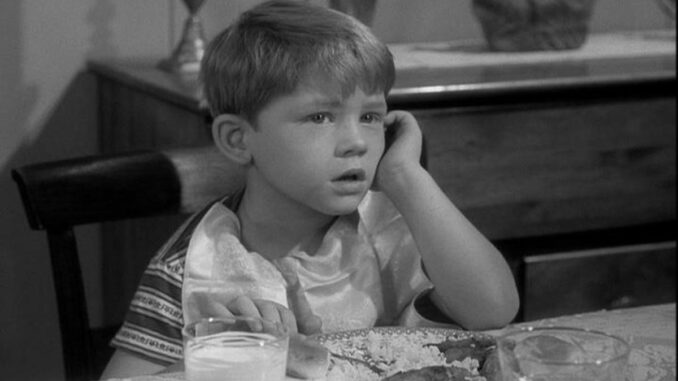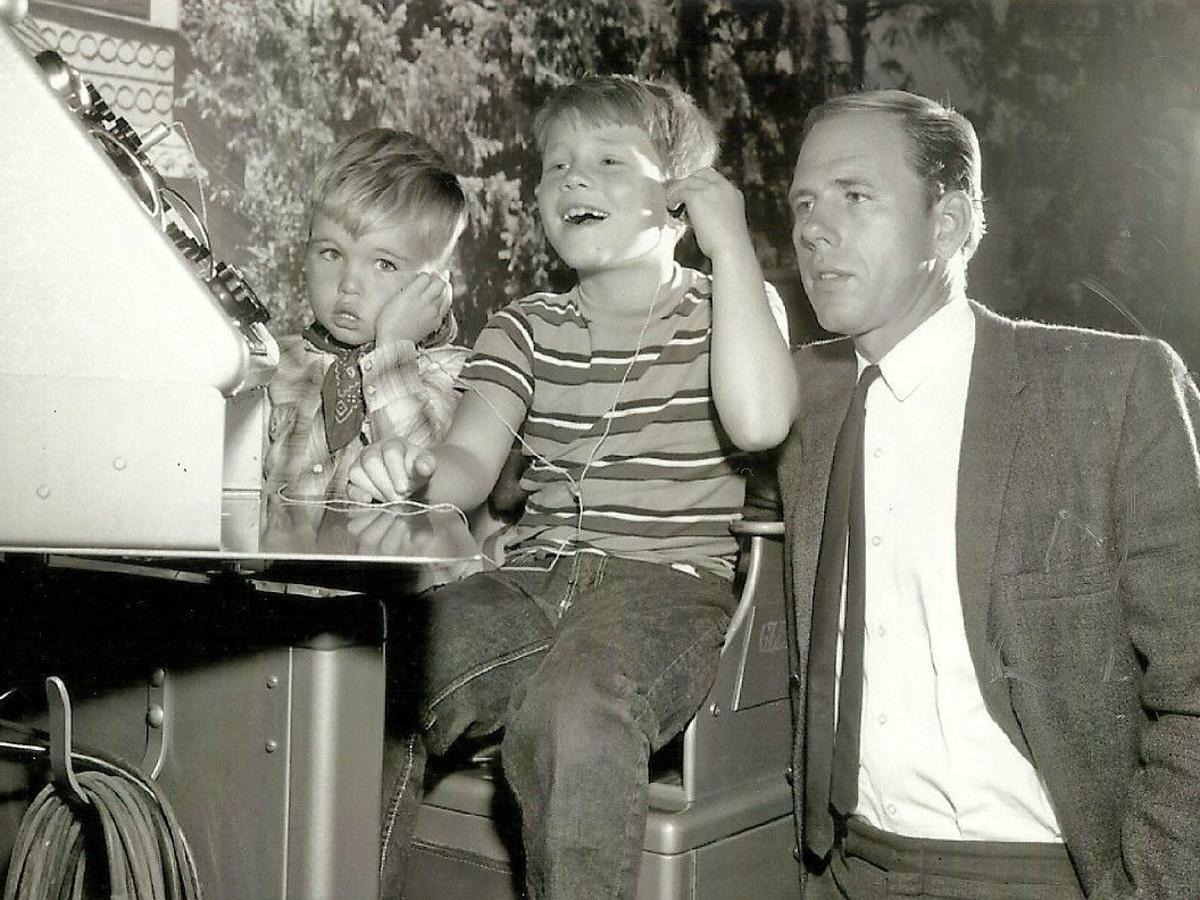
Introduction: A Director in the Making Before He Knew the Words
What if I told you that one of Hollywood’s most successful directors—Ron Howard—started dreaming about filmmaking while sitting on the porch of Andy Taylor’s house in Mayberry?
That’s not a myth. It’s a lesser-known but fascinating truth about the red-headed boy we all knew as Opie on The Andy Griffith Show. Long before he stepped into a director’s chair, Ron Howard was soaking in lessons from behind the scenes, crafting a vision of storytelling that would later win him Oscars and admiration across the world.
In this article, we’ll explore how Ron Howard’s childhood on The Andy Griffith Show quietly planted the seeds of his legendary directing career—and why those early years mattered more than anyone knew.
The Rise of a Child Star With a Vision
Opie Taylor Wasn’t Just Acting—He Was Learning
While most kids were playing tag or worrying about homework, Ron Howard was on set with acting legends like Andy Griffith and Don Knotts. But he wasn’t just delivering his lines—he was watching, observing, and absorbing everything around him.
Howard later revealed in interviews that he became fascinated with how TV shows were made. Instead of racing off to the trailer after a scene, he’d linger behind, asking questions and watching the crew. In many ways, the Andy Griffith Show set was his first film school.
Andy Griffith’s Mentorship Left a Mark
Andy Griffith wasn’t just a TV dad—he was a real-life mentor to young Ron. Griffith took his time to explain things to Ron, encouraged his curiosity, and treated him like a budding professional rather than just a kid reciting lines.
That early encouragement gave Ron the confidence to believe he could be more than a child star. It planted the idea that storytelling wasn’t just about being on screen—it could be even more powerful behind it.
Behind-the-Scenes Moments That Inspired Ron’s Future
Watching Directors at Work
Ron Howard often credited directors like Bob Sweeney and Richard Crenna—both of whom directed multiple Andy Griffith Show episodes—with sparking his interest in directing. He studied how they composed shots, communicated with actors, and adapted scenes on the fly.
Even as a young boy, Howard noticed the magic behind the camera—the orchestration of lights, timing, pacing, and movement. He’d later say that these moments were “formative and thrilling.”
Getting a Taste of Storytelling Mechanics
Ron also took an interest in editing, camera angles, and blocking. He didn’t just memorize lines—he thought about why characters said what they did and how the scenes were structured. That level of insight was rare for someone so young and hinted at his future storytelling brilliance.

A Childhood Surrounded by Talent
Learning from Don Knotts and Frances Bavier
Ron was surrounded by comedic and dramatic legends. Don Knotts (Barney Fife) and Frances Bavier (Aunt Bee) were character actors at the top of their game, and their commitment to craft influenced Ron deeply.
He saw how professionals approached timing, delivery, and emotional nuance. It wasn’t just fun and games—he was quietly absorbing a masterclass in acting and production.
Early Exposure to Production Culture
TV production is complex and demanding, but for Ron, it was normal. He was part of table reads, rehearsal sessions, and long shooting days. Unlike many child actors who were shielded from the technical side, Ron was exposed to it fully.
This immersion would later allow him to step onto any set as a director with an almost intuitive understanding of how things should run.
The Turning Point—Knowing He Wanted More
Telling His Father About His Dream
At just nine years old, Ron told his actor father, Rance Howard, “I think I’d like to be a director someday.” Most kids say they want to be astronauts or superheroes. Not Ron. He already had a creative calling.
His father, who was also in the industry, didn’t dismiss it. Instead, he supported and encouraged it, knowing his son’s ambition came from real passion—not fleeting fantasy.
Staying Humble Through Hollywood Growth
Despite fame, Ron remained grounded. His upbringing on the Andy Griffith set taught him humility, discipline, and respect for crew members and creatives alike—traits that would later define his directorial style.
From Mayberry to Movie Sets
Post-Mayberry Years Cemented His Passion
After The Andy Griffith Show ended, Ron appeared on Happy Days, another iconic series. Yet even then, directing remained in the back of his mind. He asked questions. He observed directors. And he waited for his turn.
Directorial Debut and Rise to Stardom
Ron made his directorial debut with Grand Theft Auto in 1977, but it was Splash (1984) and Apollo 13 (1995) that solidified his talent. His style? Emotional resonance, solid structure, and character-driven plots—all likely influenced by those early TV years.
And let’s not forget A Beautiful Mind (2001), which won him the Academy Award for Best Director.
The Lasting Influence of Mayberry
What Ron Took With Him Into Directing
From Andy Griffith’s leadership to the comedic genius of Don Knotts, everything Ron Howard saw on set helped form his directing philosophy. He valued collaboration, storytelling integrity, and emotional beats that resonated.
Directing With Empathy and Understanding
Ron Howard is known as a “director’s actor”—someone who gets what actors need because he was one. That empathy, born from his Opie days, makes him a trusted name in Hollywood.
Hollywood Legend With Humble Beginnings
Never Outgrew His Roots
Even with fame, Howard never turned his back on Mayberry. He’s spoken fondly about his childhood on The Andy Griffith Show in dozens of interviews. For him, it wasn’t just where his career started—it was where his dreams began.
Inspiring the Next Generation
Howard often shares advice with aspiring filmmakers: “Be curious. Ask questions. Learn everything.” It’s advice rooted in his own experience—watching directors on set when he was just a boy with big dreams.
Conclusion – The Director That Opie Always Meant to Be
Ron Howard wasn’t just a kid actor who made it big. He was a student of the craft from the very beginning. The Andy Griffith Show may have introduced him to the world, but it also gave him the tools and the inspiration to shape his future.
Behind the innocent face of Opie was a sharp mind already setting sights on something greater. Today, when we look at Ron Howard’s cinematic masterpieces, we’re not just watching great films—we’re seeing the result of a dream born in Mayberry.
🟢 FAQs
1. What inspired Ron Howard to become a director?
Ron Howard was inspired by observing directors and production crews on The Andy Griffith Show as a child. He became fascinated with storytelling mechanics and camera work.
2. How old was Ron Howard when he decided to become a director?
Howard reportedly expressed interest in directing at around nine years old, while still acting as Opie on The Andy Griffith Show.
3. Did Andy Griffith influence Ron Howard’s career?
Yes, Andy Griffith mentored young Ron and treated him with respect and professionalism, which deeply influenced Howard’s approach to directing and leadership.
4. What was Ron Howard’s first film as a director?
His first major directorial project was Grand Theft Auto (1977), but his breakthrough came with Splash (1984) and Apollo 13 (1995).
5. Does Ron Howard still talk about The Andy Griffith Show?
Absolutely. He often credits the show for shaping his career and frequently speaks warmly of his time on set and the people he worked with.
